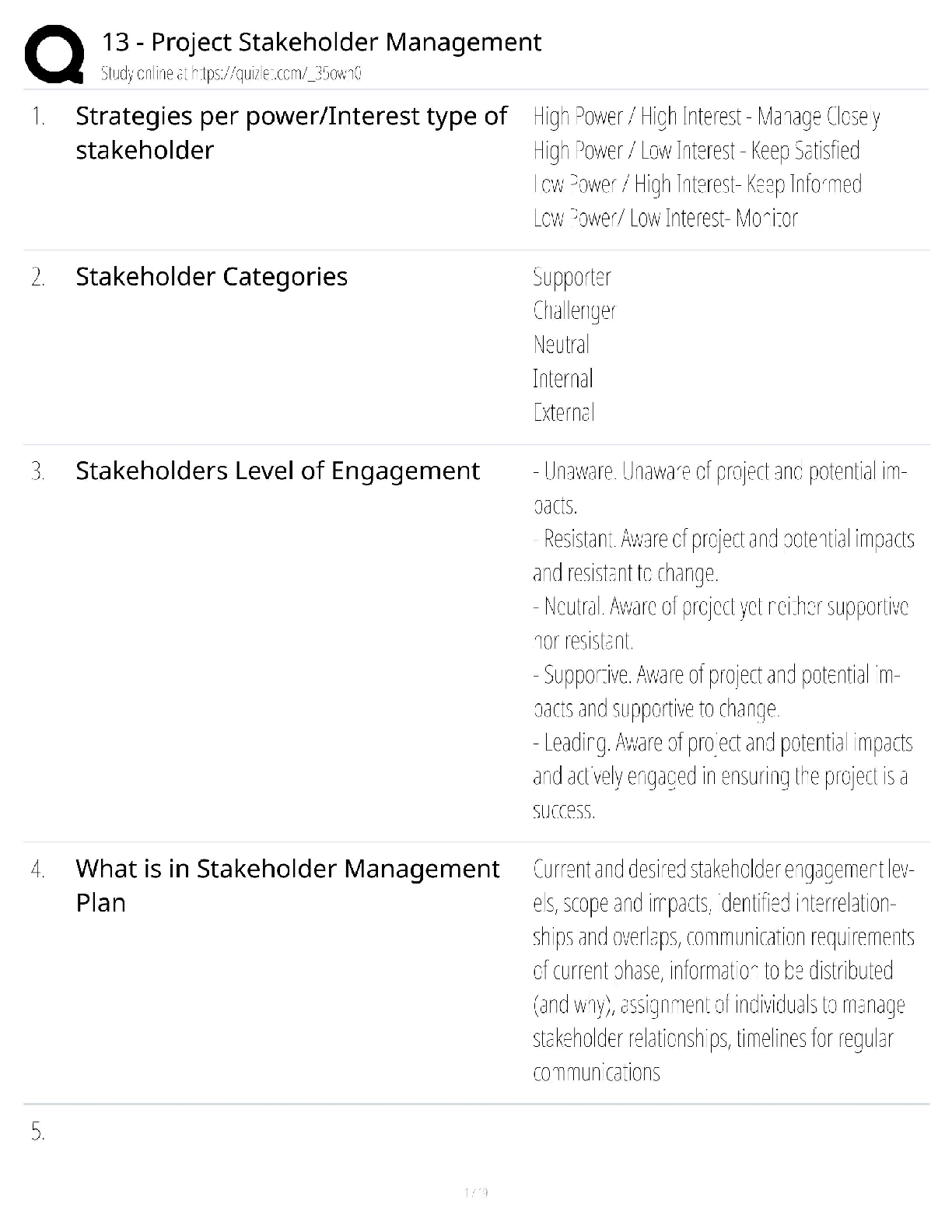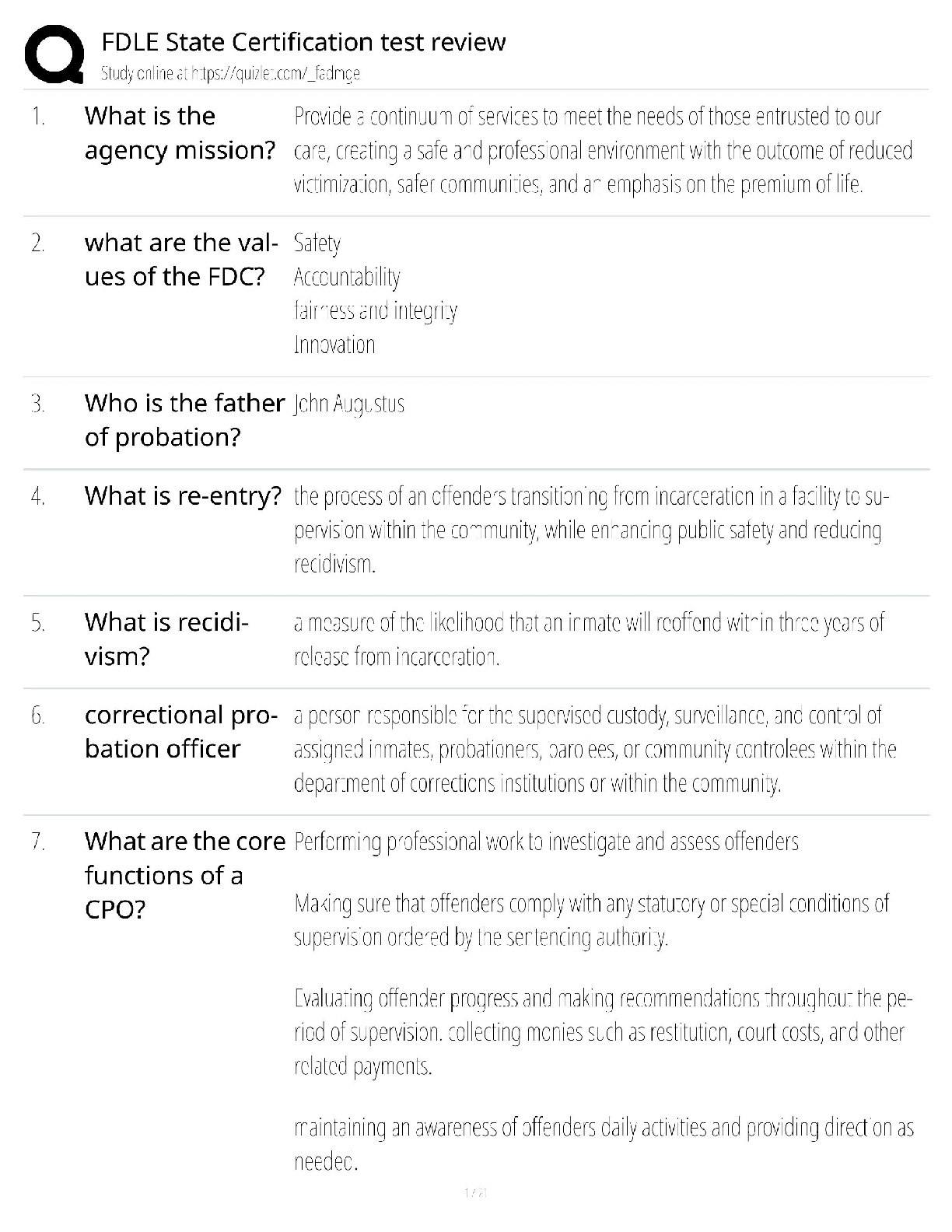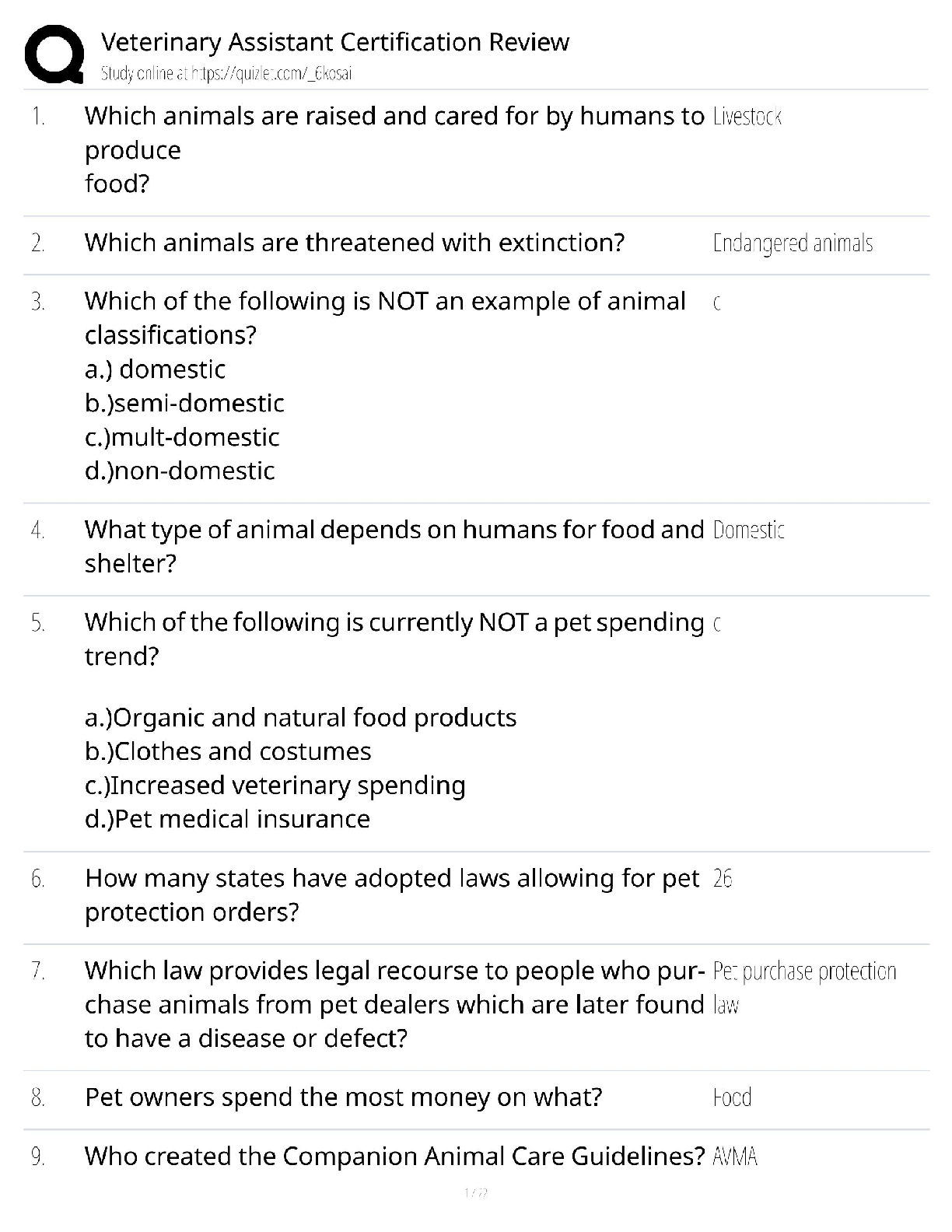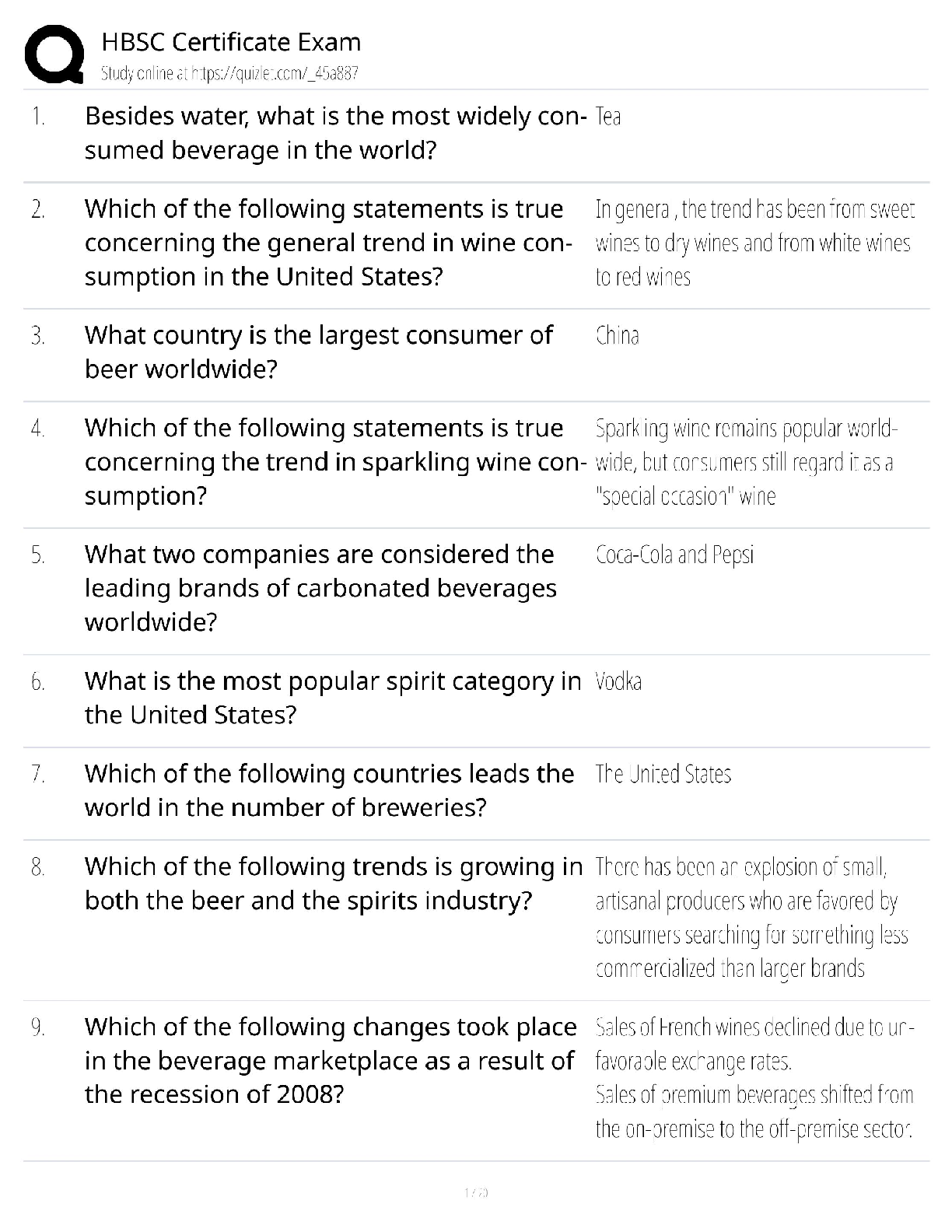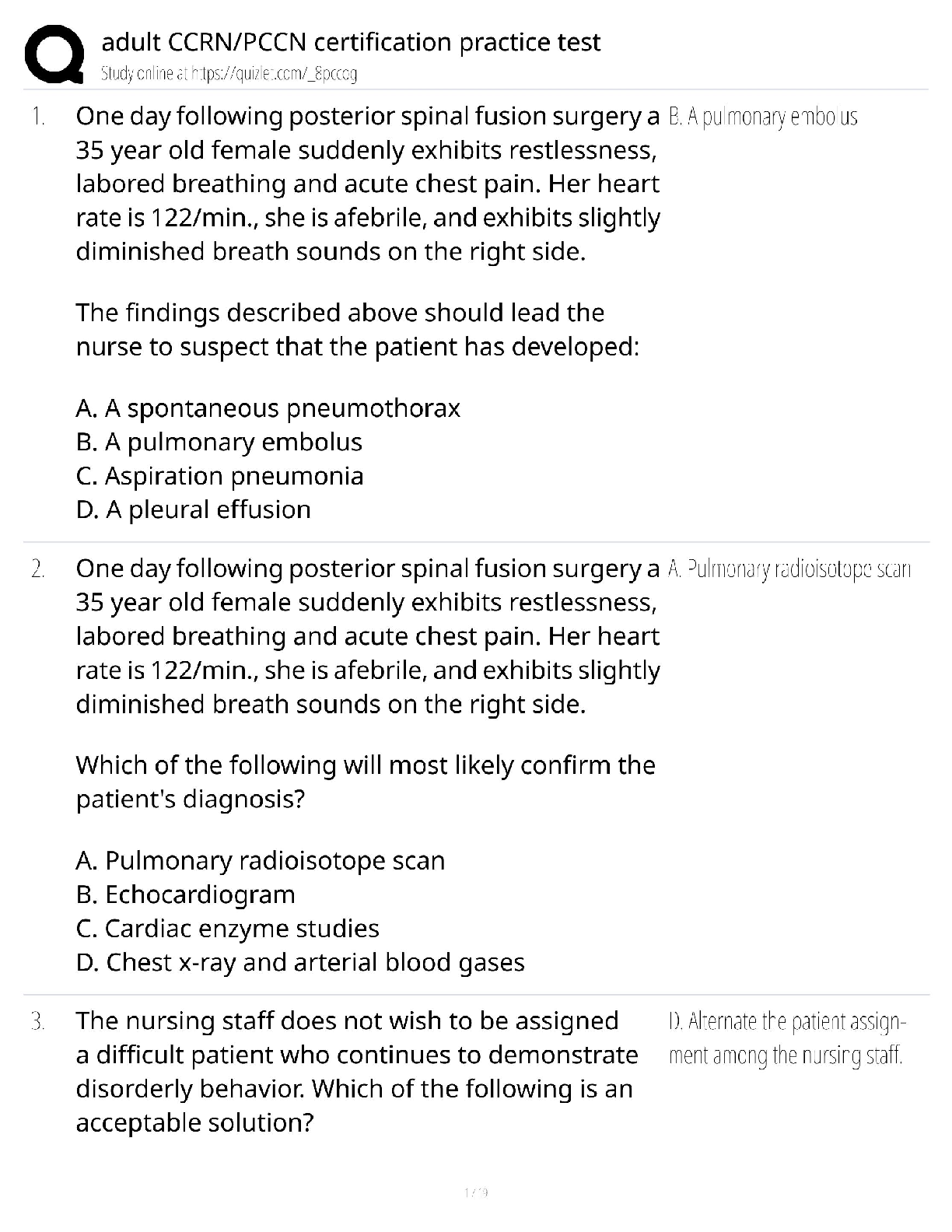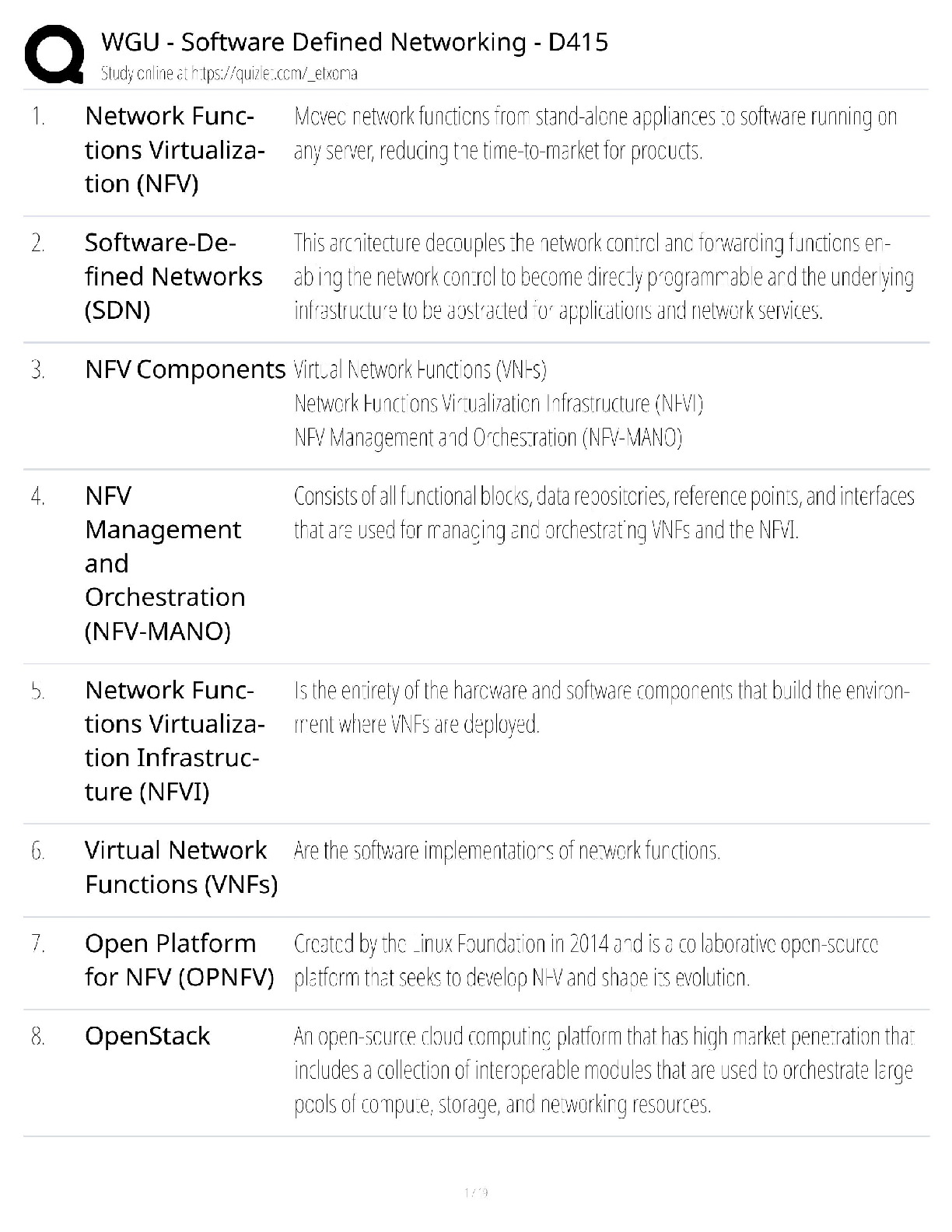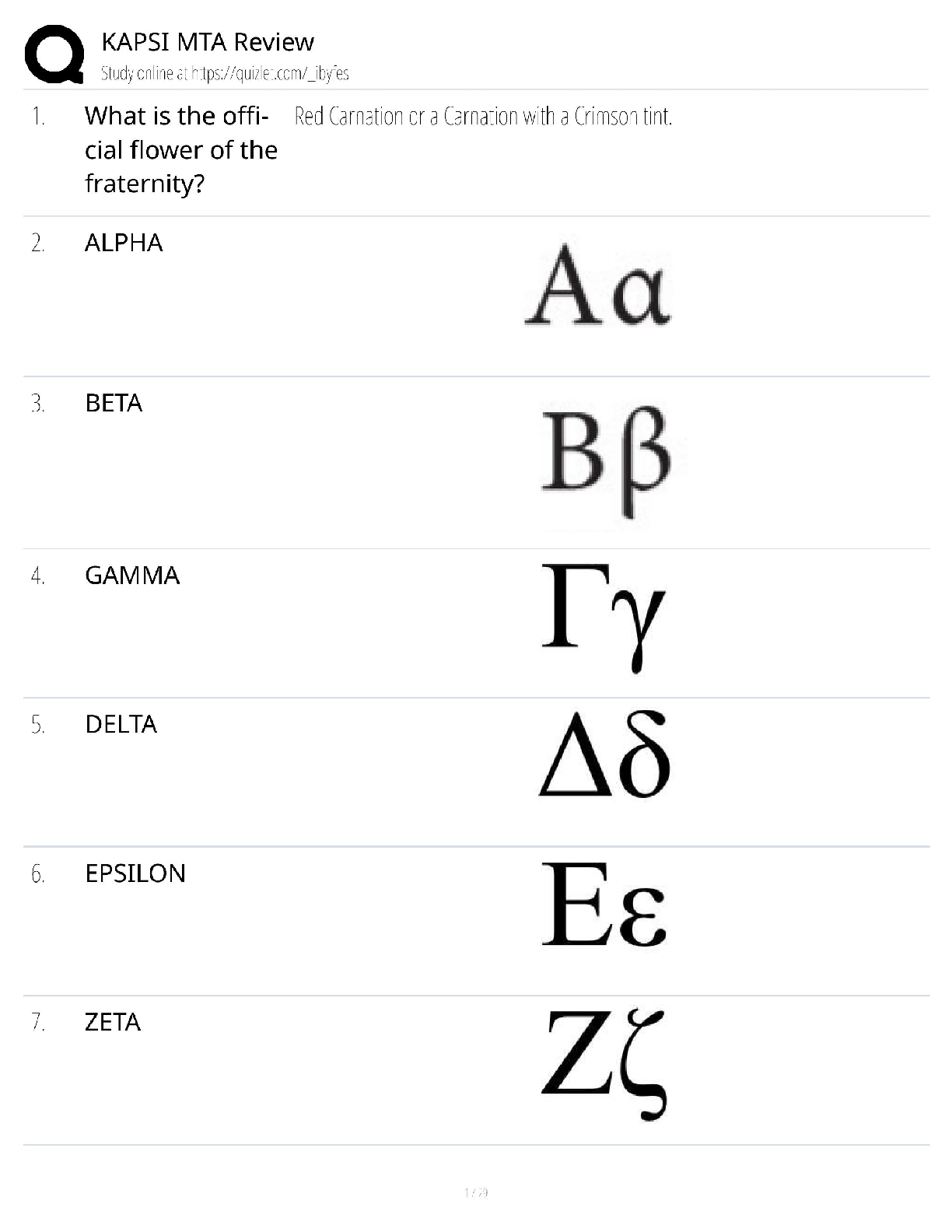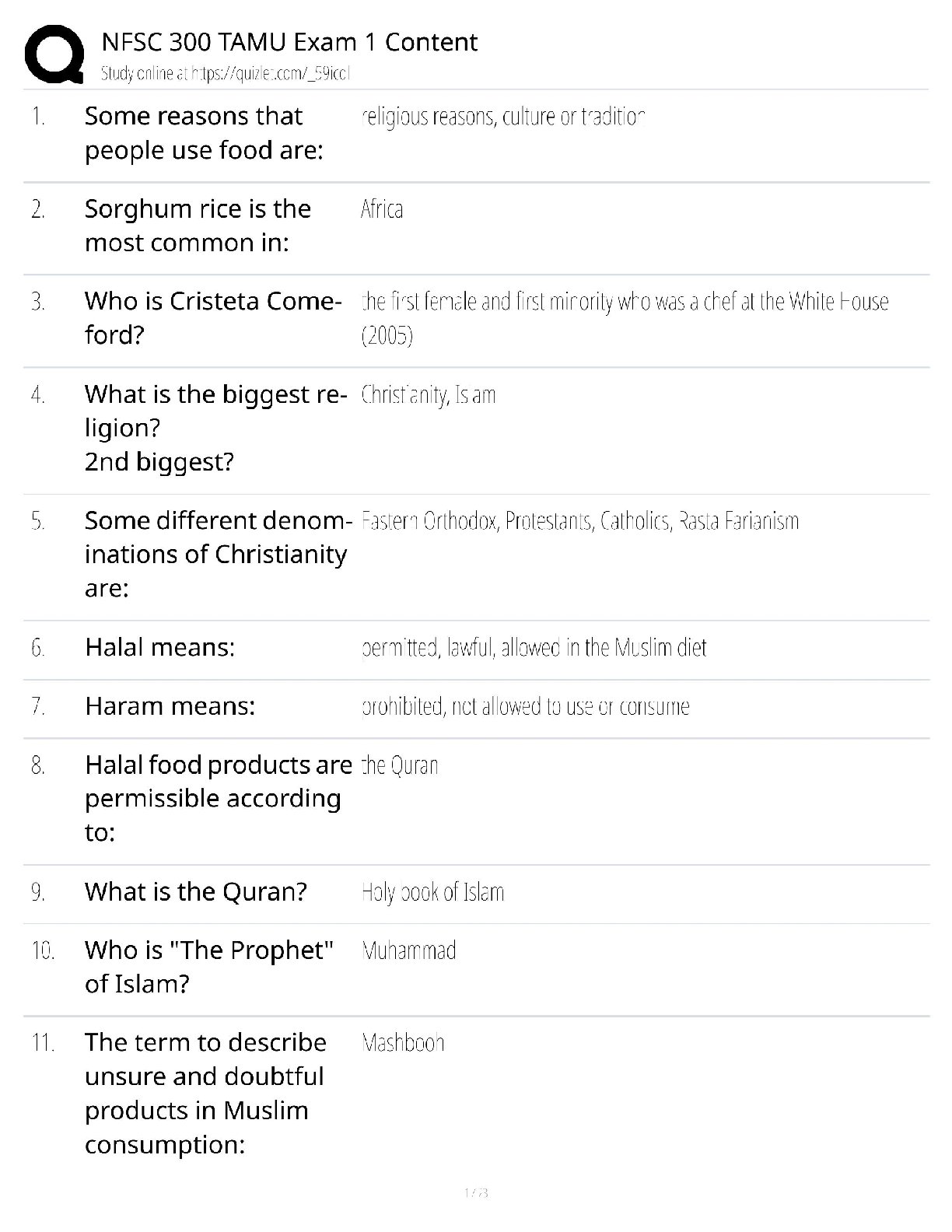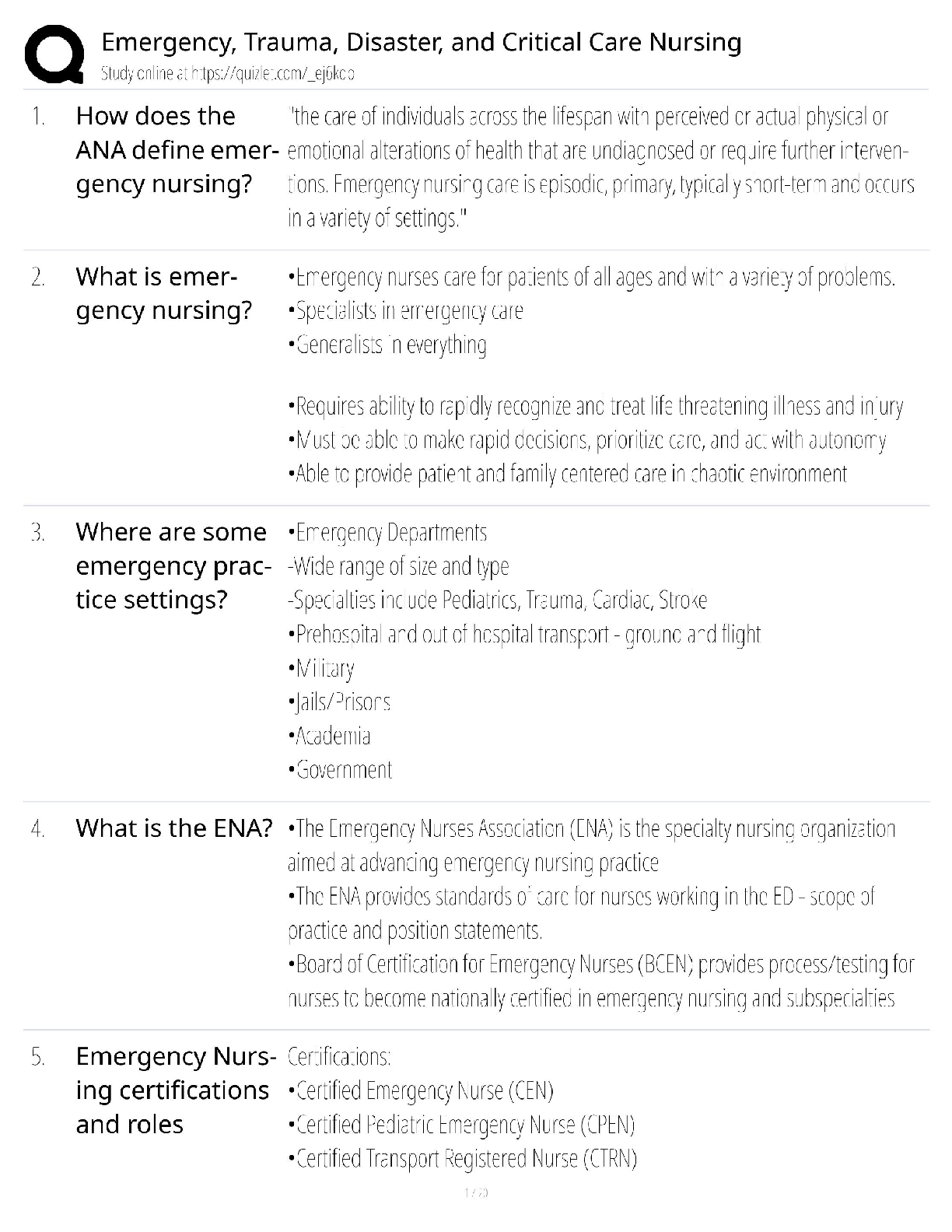Pathophysiology > QUESTIONS & ANSWERS > Growth and Development through the Lifespan QUESTIONS and ANSWERS. Exam Revision (All)
Growth and Development through the Lifespan QUESTIONS and ANSWERS. Exam Revision
Document Content and Description Below
Answers at the end of this paper For each of the following questions, choose the one best answer. 1. Which of the following is an example of health promotion in early adulthood? a. Breast self-exam ... inations for women b. Stress management c. Using seat belts d. Being immunized against hepatitis B 2. What is the major reason for obesity during early adulthood? a. Maturing of muscles and bones b. Overindulgence in food and alcohol c. Lack of exercise d. Decline in the basal metabolic rate 3. A theorist who analyzed the cognitive workings of early adulthood was a. Freud. b. Skinner. c. Bandura. d. Piaget. 4. Schaie believed that young adults differ from adolescents in the way that they _______ their cognitive abilities. a. memorize b. neglect c. analyze d. use 5. The early adult years are often referred to as a a. time of firsts. b. time of crises. c. time of anxiety. d. time of regression. 6. Famous for his “seasons of life” concept is a. Freud. b. Maslow. c. Levinson. d. Valliant. 7. Which of the following is an example of a nonstochastic theory of aging? a. Exposure to radiation that causes mutation in DNA b. Damage to cell membranes by free radicals c. Genetically programmed changes (e.g., menopause) d. Increase in connective tissue 8. Which of the following is (are) the most significant risk factor(s) for cardiovascular disease? a. Smoking and hypertension b. Diabetes and high cholesterol c. Obesity and stress d. Being male 9. The person most responsible for the intelligence testing movement was a. Thorndike. b. Webster. c. Rorschach. d. Binet. 10. ______intelligence tends to be more creative in nature. a. Fluid b. Crystallized c. Convergent d. Conceptual 11. An event long thought to be inescapable during middle adulthood is a. marriage. b. divorce. c. midlife crisis. d. health problems. 12. When people believe they possess the competence to do what needs to be done, they have a sense of a. confidence. b. self-fulfilling prophecy. c. self-expectation. d. self-efficacy. 13. What causes osteoporosis? a. Decrease in calcium in the diet b. Decreased utilization of calcium c. History of bone fractures d. Small bone structure 14. Which of the following is evidence of heart disease later in life? a. Prolonged contraction time of the heart muscle b. Increased rigidity of the heart valves c. Neither a nor b d. Both a and b 15. A cognitive ability that seems to decline with age is a. assimilation. b. speed of processing. c. notational accommodation. d. schema structuring. 16. Any loss in cognitive functioning in these years may be offset by acquired ______and ______. a. assimilation, accommodation b. cognition, emotion c. introjection, regression d. knowledge, skill 17. These later years are Erikson’s time of integrity or a. despair. b. transition. c. displacement. d. rationalization. 18. The person who is widely credited with making the needs of the dying more well known is a. Skinner. b. Piaget. c. Freud. d. Kubler-Ross. [Show More]
Last updated: 3 years ago
Preview 1 out of 7 pages
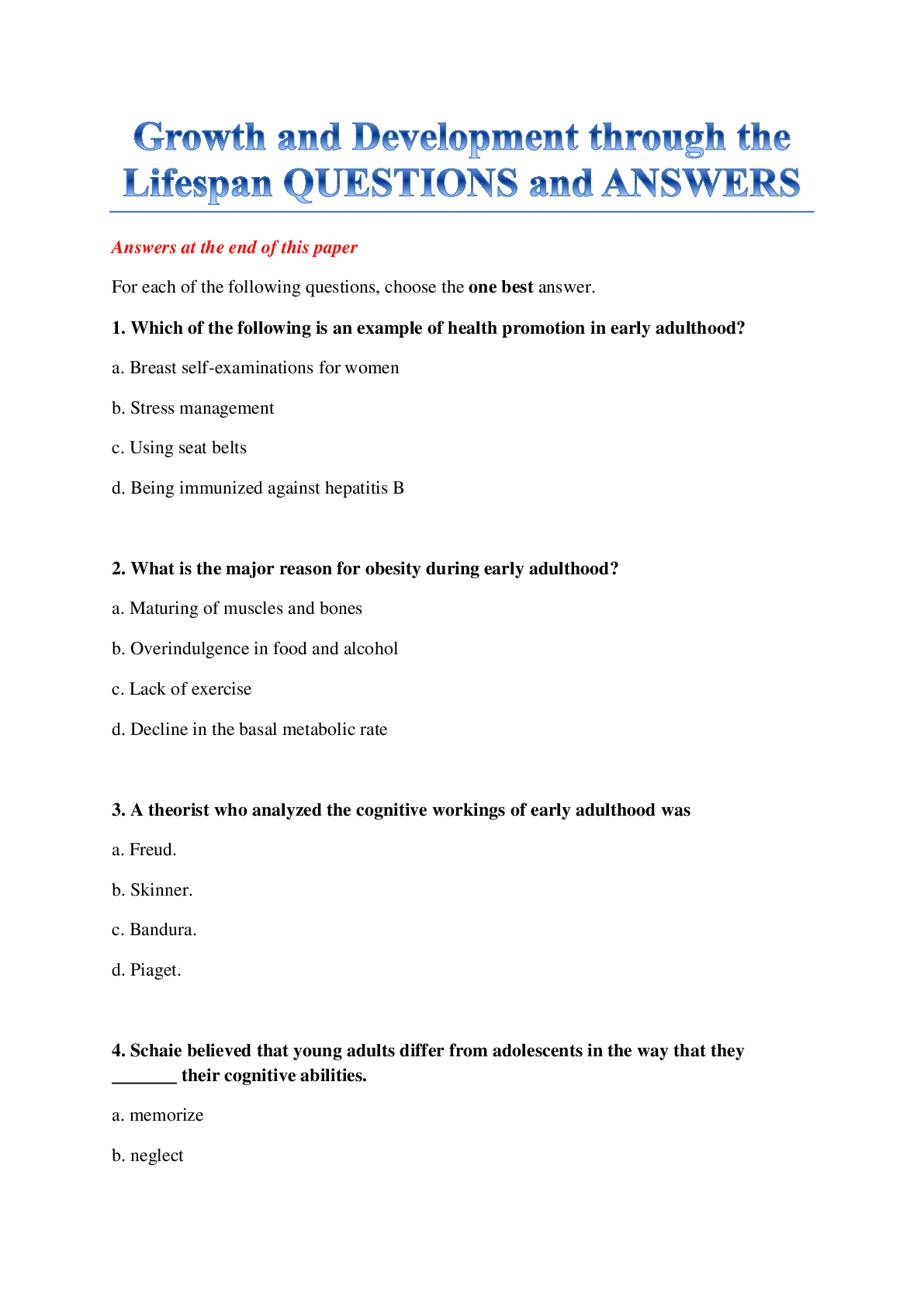
Buy this document to get the full access instantly
Instant Download Access after purchase
Buy NowInstant download
We Accept:

Reviews( 0 )
$9.00
Can't find what you want? Try our AI powered Search
Document information
Connected school, study & course
About the document
Uploaded On
Apr 17, 2020
Number of pages
7
Written in
All
Additional information
This document has been written for:
Uploaded
Apr 17, 2020
Downloads
0
Views
166


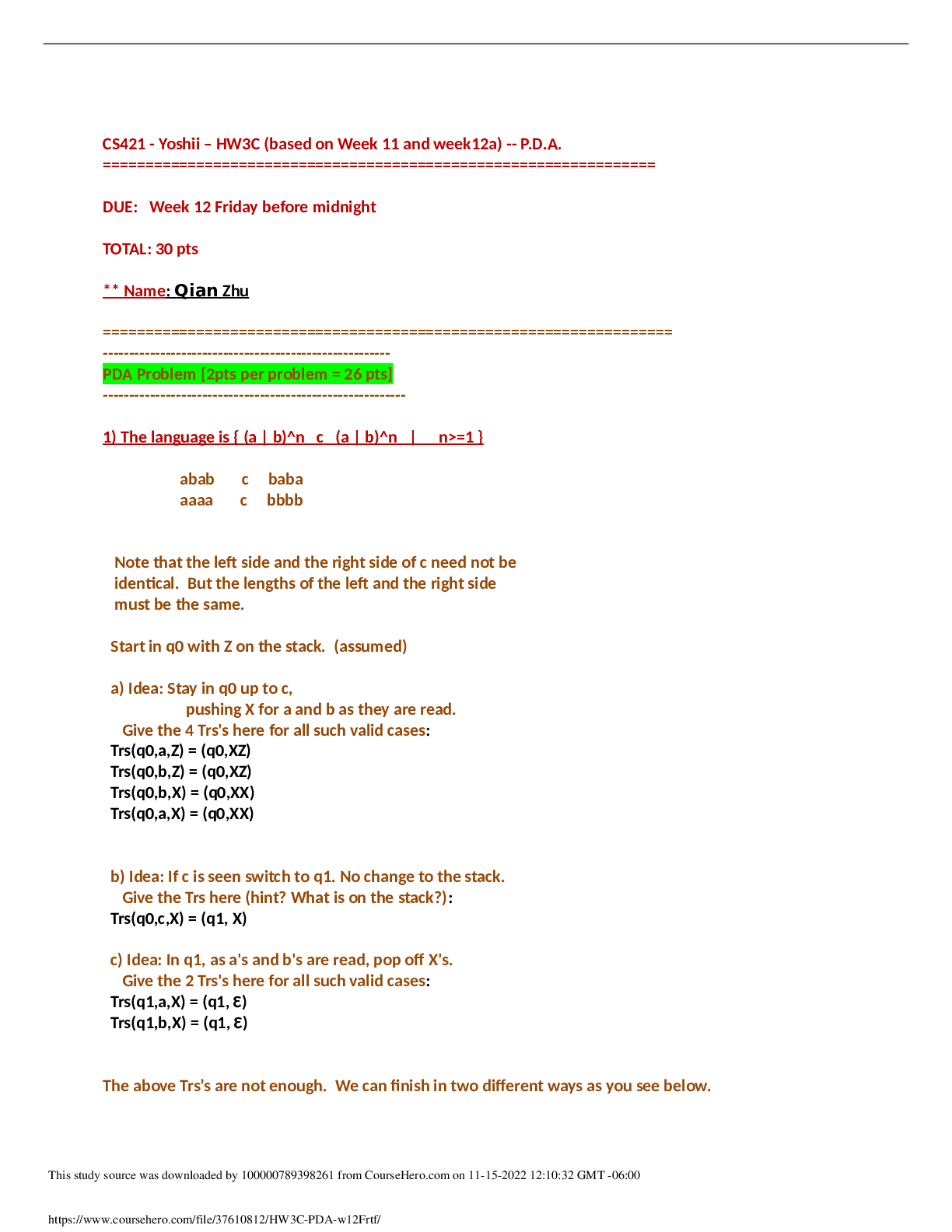


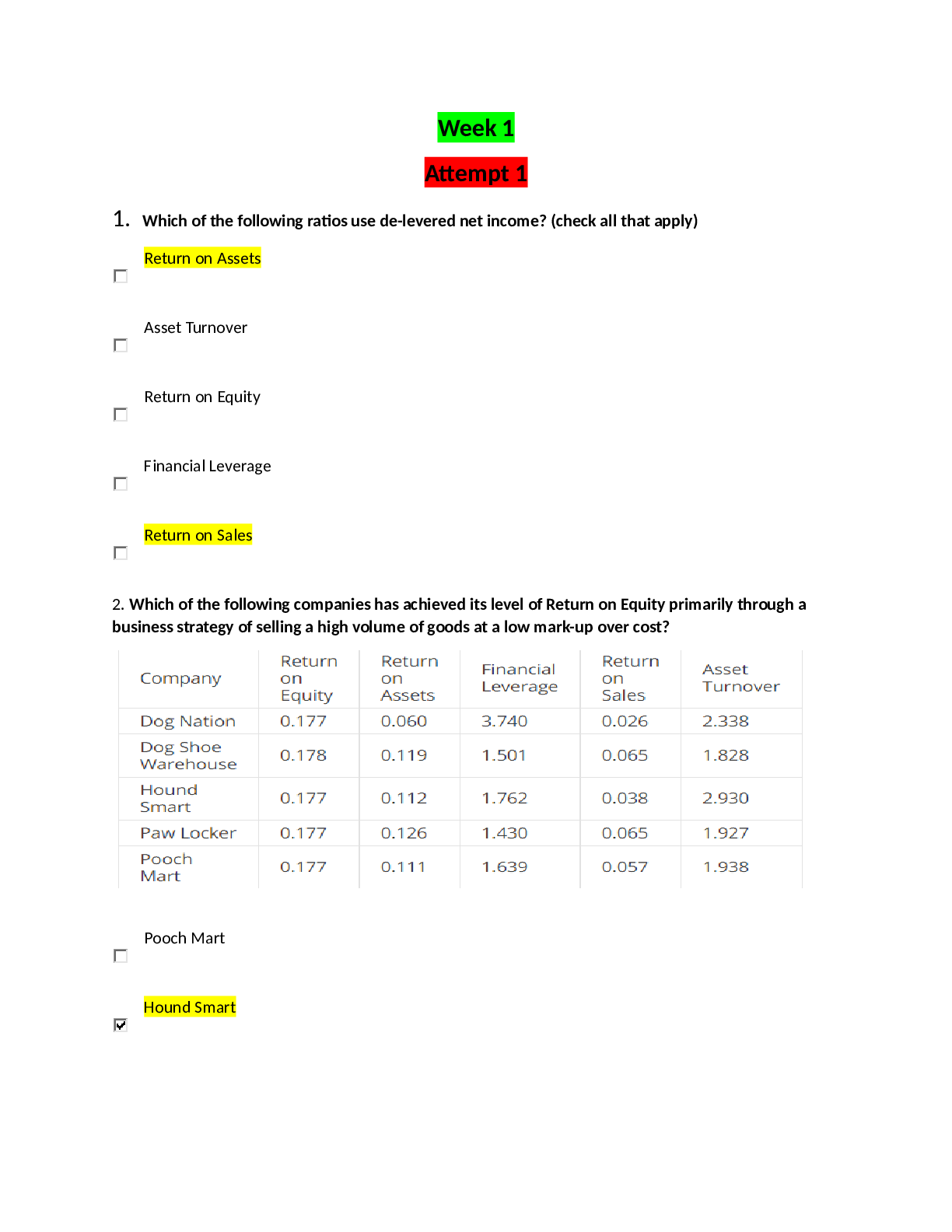
.png)
.png)
.png)
.png)
.png)
.png)
.png)
